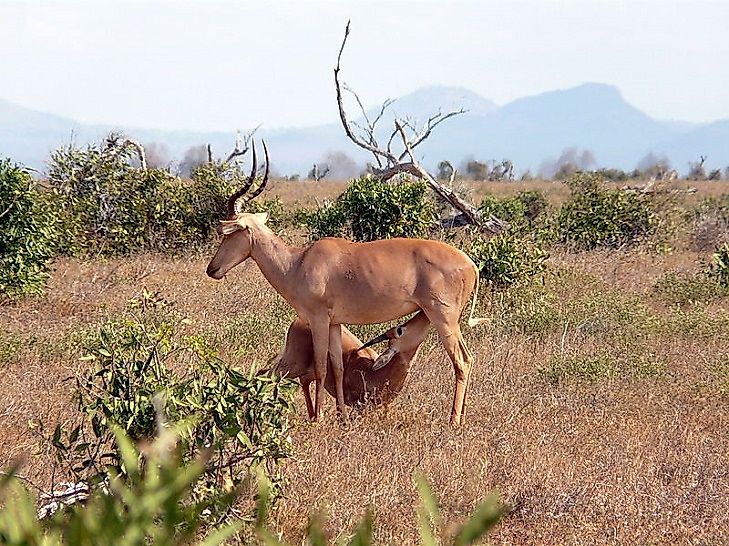Threatened Mammals Of Kenya

Kenya is one of the world leaders in the conservation of wildlife, and also a home to a diverse collection of species of mammals. The country is home to some of the rare mammals on the planet. Also, Kenya is one of the few countries to host all the big five mammals. Much of wildlife in Kenya is considered safe and having high numbers. However, despite the several conservation efforts, some of the mammals face the threat of extinction. Poaching and clearing of habitat for settlement and agriculture have contributed to the dwindling number. Some of the threatened mammals of Kenya are looked at below.
Tana River Red Colobus
The Tana River Red colobus, scientifically named the Procolobus rufomitratus, is one of the endangered primates in the Cercopithecidae Family. It is among the 25 world most endangered primates and is endemic to the forests near the River Tana, Kenya. Tana River red colobus resides along the floodplains of the lower Tana River in the eastern part of Kenya. The monkeys feed on leaves of some tree species supplementing it with unripe fruits and seeds. The Tana River red colobus has a large stomach with three chambers carrying bacterium which helps in the digestion of leaves. The monkey is ruddy black on the dorsal and red or brown on the chest and inner parts of the limbs. The infant is silky at birth with a gray underbelly. The endangerment of the species is caused by deforestation and the illegal hunting.
Black Rhinoceros
The Black rhinoceros, scientifically called Diceros bicornis, is a rhinoceros species which is native to southern and eastern Africa. An adult black rhino grows to a height of 140 to 180 centimeters, a length of 3 to 4 meters, and a weight of 800 to 1,400 kilograms. The longer horn may measure 1.5 meters while a smaller horn may sprout. The horns are used for digging and breaking branches during feeding, and for defense. The skin is made of a thick layer which provides protection from thorns and other sharp objects. Black rhinoceros has poor eyesight but excellent ears and sense of smell which alerts it of any predator. They communicate by scent marking and urine spray, especially during the breeding season. It feeds on leaves, branches, shoots, and fruits. Habitat change and illegal poaching are the major threats posed to the Black rhinoceros.
Hirola
The Hirola, Beatragus hunter, also known as the Hunter’s Antelope, is listed as a critically endangered antelope species, with a global population of between only 300 and 500 individuals remaining. It is a medium-sized antelope that is tan in color with lighter under parts. The tail is white and extends to the hocks while the horns are sharp and lack basal pedicles. Hirola has white spectacle around the eye and an inverted chevron between the eyes. An adult antelope measures 99 to 125 centimeters at the shoulder and weighs 70 to 120 kilograms. A female Hirola gives birth and stay away from the herd for two months while the male secures territory on a good pasture. They are seasonal breeders giving birth from September to November. Hirola are grazers but also browse during the dry season. Their diets consist of tall grasses with a high leaf to stem ratio. Because Hirola is critically endangered, conservation measures including erecting of a 23-square-kilometer, predator-proof, fenced in area to protect a population of 48 antelopes
Threatened Mammals Of Kenya
| Threatened Mammals of Kenya | Scientific Name |
|---|---|
| Tana River red colobus | Procolobus rufomitratus |
| Black rhinoceros | Diceros bicornis |
| Hirola | Beatragus hunteri |
| Aders' duiker | Cephalophus adersi |
| African wild dog | Lycaon pictus |
| Grevy's zebra | Equus grevyi |
| Nubian giraffe | Giraffa camelopardalis camelopardalis |
| Golden-rumped elephant shrew | Rhynchocyon chrysopygus |
| Barbour's vlei rat | Otomys barbouri |
| Mount Elgon vlei rat Giant thicket rat | Otomys jacksoni Grammomys gigas |











